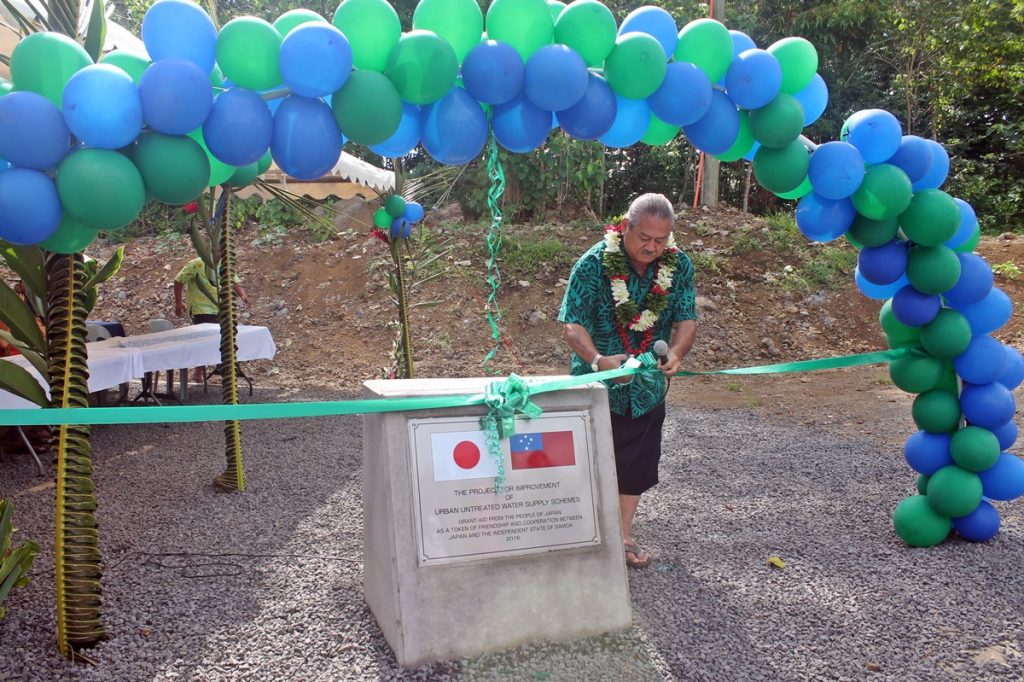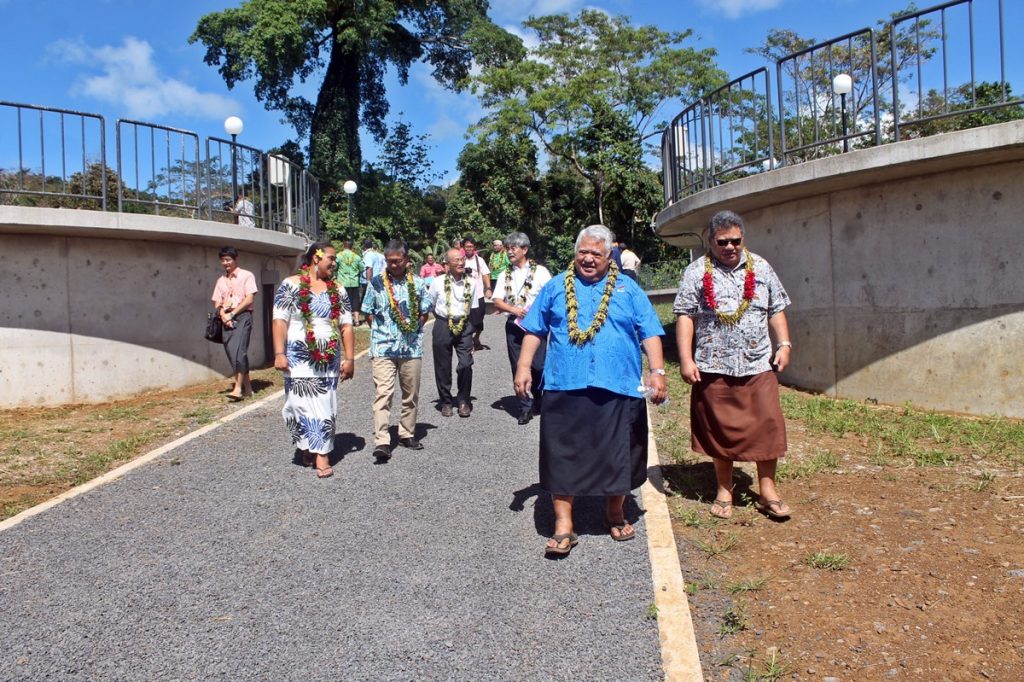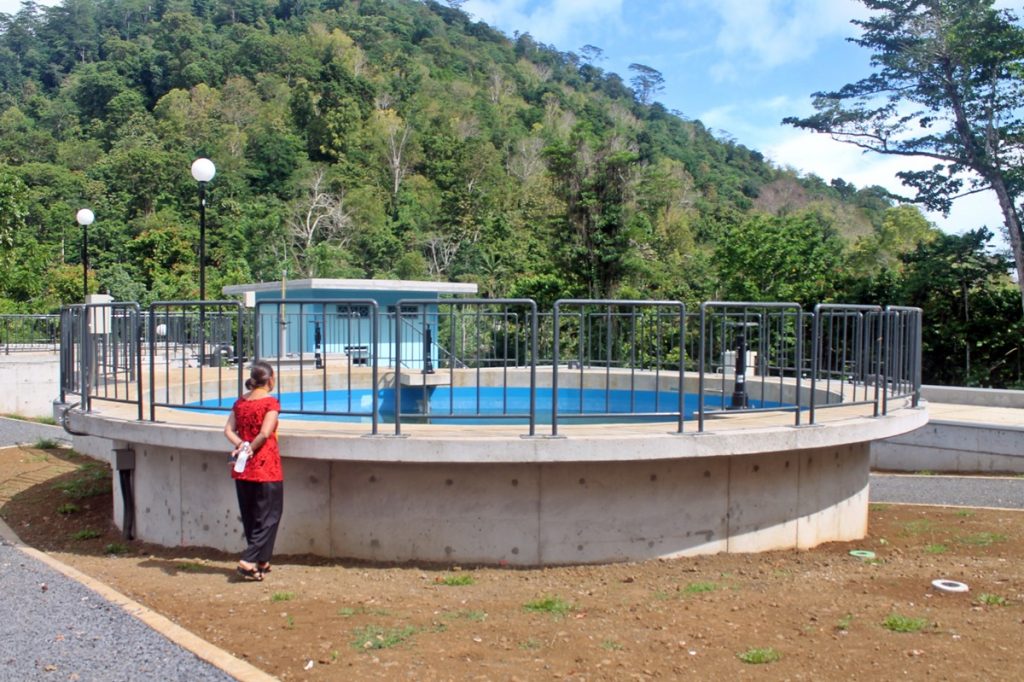21 October 2016
The Government has officially opened the Water Treatment Plants at Tapatapao, Vailima and Vaivase-Uta.
This was in partnership with the Japanese Government under the Consolidated Urban Untreated Water Supply Schemes Rehabilitation Project, which was signed between former Minister of Works, Transport and Infrastructure Manualesagalala Enokati Posala and Ambassador of Japan to Samoa, H.E. Tuimaugaoalii Kazumasa Shibuta in 2014.
- Minister of Works, Transport and Infrastructure, Papalii Niko Lee Hang cuts the ribbon to officially open the Vailima Treatment Plant
- Prime Minister Tuilaepa takes a tour of the Tapatapao facility. Japanese Ambassador Shibuta is accompanied by SWA Managing Director.
- Water Treatment Reservoir
The major works aims to improve sanitation on site to secure safe drinking water, upgrades for water intake facilities, transmission pipelines, distribution pipelines and installation of water meters to be administered by the Samoa Water Authority and catering to 45,000 people living in and around Apia.
“Through the Samoa Water Authority, government is working with our development partners to ensure that water supply is clean and accessible to as many people as possible. Not everyone can be reached, but with new technology and improved services, we can reach more and more people across the country,” said the Prime Minister.
Japan’s Ambassador, Tuimaugaoalii Kazumasa Shibuta was proud to speak of Japan’s assistance to Samoa.
“Now, the SWA is going to manage the facilities as public assets and provide clean water for residents. I have already received good reports about SWA from our JICA experts and consultants.
“I hope that lessons from JICA experts under the Capacity Enhancement Project for Samoa Water Authority, with Okinawa will help SWA.
“Water is essential to provide quality of life and ensure a healthy population in to the future,” said Tuimaugaoalii.
Ambassador Shibuta also emphasised that the assistance from Japan was a grant and not a loan scheme.
The project includes:
· The installation of the of treatment plants and construction of a chlorination and chemical buildings;
· Purchase and installation of reservoir and fittings at the water treatment plant sites.
· Upgrade of the road from the intake;
· Installation of pipeline from the intake to the water treatment intake;
· Construction of new pipeline networks which approximately 2,000 meters long for water distribution throughout the villages.
###




